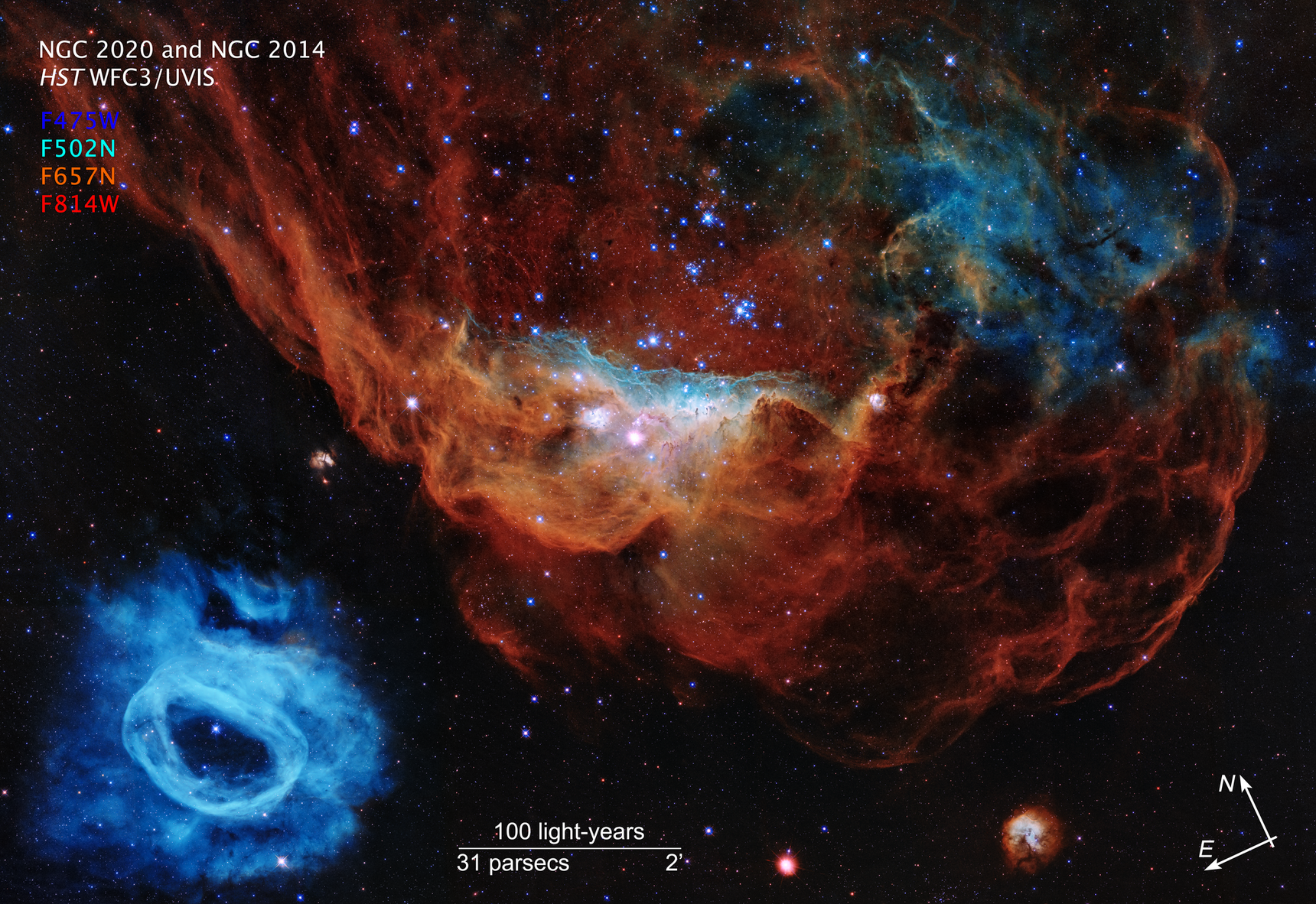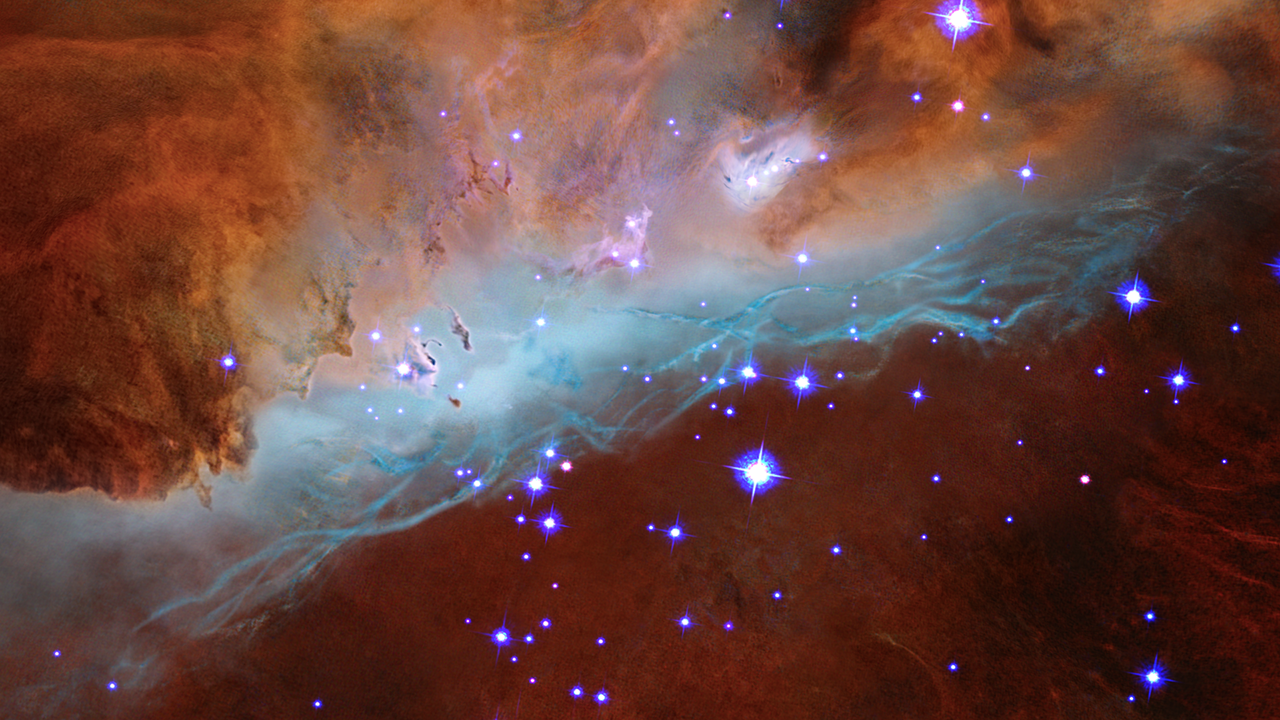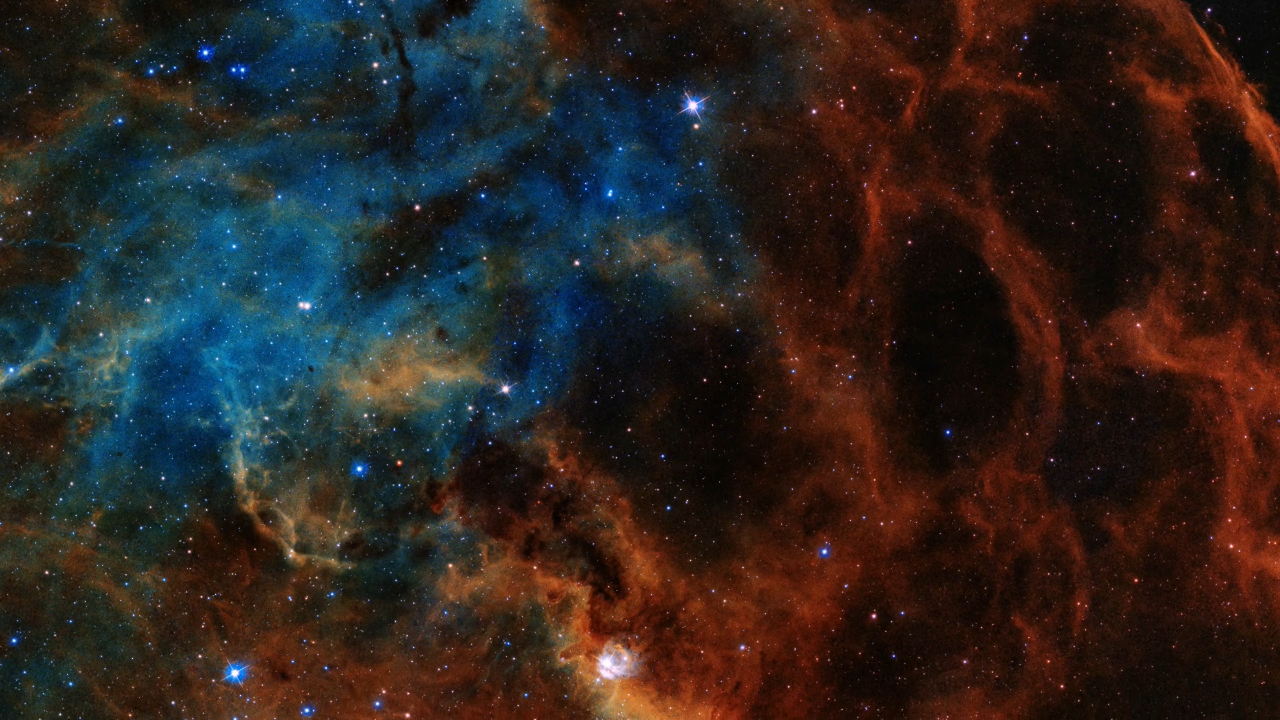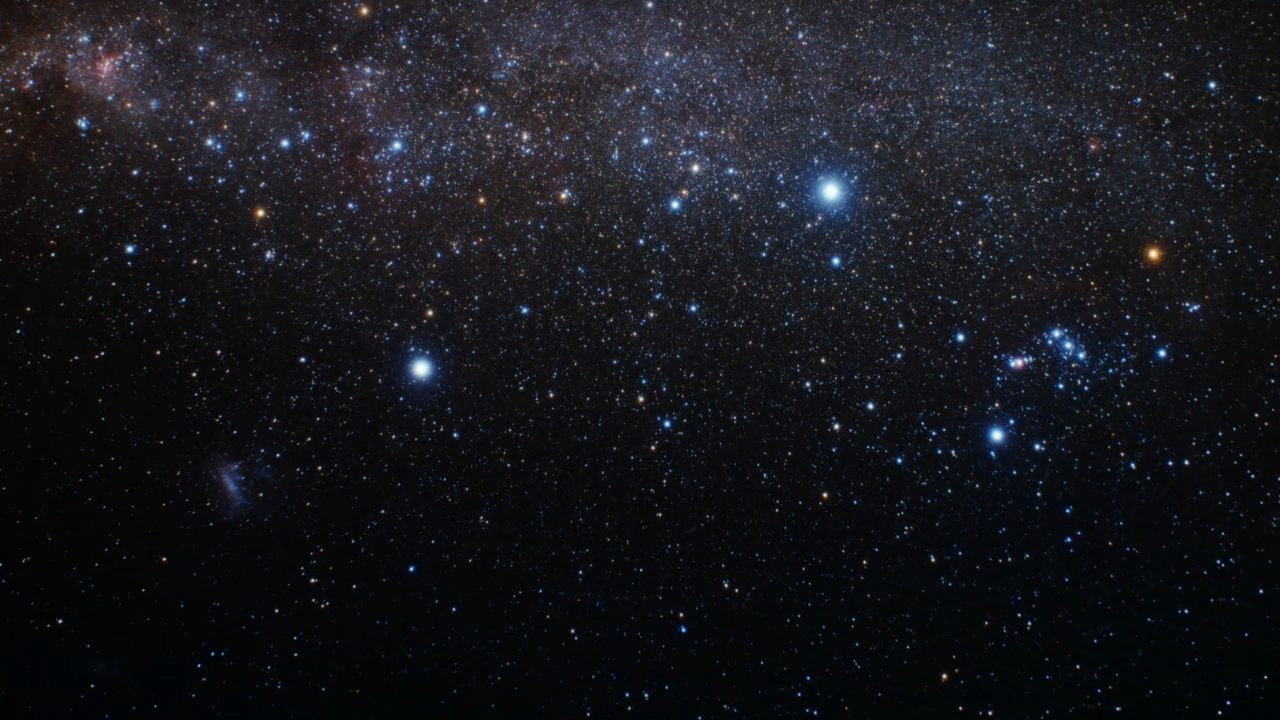1 min read
Cosmic Reef

Hubble Reveals a Tapestry of Blazing Starbirth
This Hubble image shows how young, energetic, massive stars illuminate and sculpt their birthplace with powerful winds and searing ultraviolet radiation.
In this Hubble portrait, the giant red nebula (NGC 2014) and its smaller blue neighbor (NGC 2020) are part of a vast star-forming region in the Large Magellanic Cloud, a satellite galaxy of the Milky Way, located 163,000 light-years away. The image is nicknamed the "Cosmic Reef," because the nebulas resemble an undersea world.
The sparkling centerpiece of NGC 2014 is a grouping of bright, hefty stars, each 10 to 20 times more massive than our Sun. The stars' ultraviolet radiation heats the surrounding dense gas. The massive stars also unleash fierce winds of charged particles that blast away lower-density gas, forming the bubble-like structures seen on the right, which resemble coral. The stars' powerful stellar winds are pushing gas and dust to the denser left side of the nebula, where it is piling up, creating a series of dark ridges bathed in starlight. The blue areas in NGC 2014 reveal the glow of oxygen, heated to nearly 20,000 degrees Fahrenheit by the blast of ultraviolet light. The cooler, red gas indicates the presence of hydrogen and nitrogen.
By contrast, the seemingly isolated blue nebula at lower left (NGC 2020) has been created by a solitary mammoth star 200,000 times brighter than our Sun. The blue gas was ejected by the star through a series of eruptive events during which it lost part of its outer envelope of material.
The image, taken by Hubble's Wide Field Camera 3, commemorates the Earth-orbiting observatory's 30 years in space.
Hubble Trivia
Launched on April 24, 1990, NASA's Hubble Space Telescope has made more than 1.4 million observations of nearly 47,000 celestial objects. More than 900,000 observations were taken with imaging instruments.
In its 30-year lifetime the telescope has racked up more than 175,000 trips around our planet, totaling about 4.4 billion miles.
Hubble observations have produced nearly 164 terabytes of data, which are available for present and future generations of researchers.
Astronomers using Hubble data have published more than 17,000 scientific papers, with more than 1,000 of those papers published in 2019.
About the Object
- R.A. PositionR.A. PositionRight ascension – analogous to longitude – is one component of an object's position.05:32:23.71
- Dec. PositionDec. PositionDeclination – analogous to latitude – is one component of an object's position.-67:42:05.62
- ConstellationConstellationOne of 88 recognized regions of the celestial sphere in which the object appears.Dorado
- DistanceDistanceThe physical distance from Earth to the astronomical object. Distances within our solar system are usually measured in Astronomical Units (AU). Distances between stars are usually measured in light-years. Interstellar distances can also be measured in parsecs.The object lies 163,000 light-years away from Earth.
- DimensionsDimensionsThe physical size of the object or the apparent angle it subtends on the sky.The image is 11 arcminutes across (about 520 light-years).
About the Data
- Data DescriptionData DescriptionProposal: A description of the observations, their scientific justification, and the links to the data available in the science archive.
Science Team: The astronomers who planned the observations and analyzed the data. "PI" refers to the Principal Investigator.The HST observations include those from programs 15986 M. Mutchler. High-level science products for these data are available from the MAST archive. - InstrumentInstrumentThe science instrument used to produce the data.WFC3/UVIS
- Exposure DatesExposure DatesThe date(s) that the telescope made its observations and the total exposure time.Jan-Feb 2020
- FiltersFiltersThe camera filters that were used in the science observations.F475W, F502N, F657N, F814W
- Object NameObject NameA name or catalog number that astronomers use to identify an astronomical object.NGC 2020 and NGC 2014
- Object DescriptionObject DescriptionThe type of astronomical object.Wolf-Rayet Nebula and Star Forming Region
- Release DateApril 24, 2020
- Science ReleaseHubble Marks 30 Years in Space with Tapestry of Blazing Starbirth
- Credit

These images are a composite of separate exposures acquired by the WFC3/UVIS instrument on the Hubble Space Telescope. Several filters were used to sample narrow wavelength ranges. The color results from assigning different hues (colors) to each monochromatic (grayscale) image associated with an individual filter. In this case, the assigned colors are: Blue: F475W Cyan: F502N Orange: F657N Red: F814W

Related Images & Videos

Cosmic Reef Visualization
Flyby Offers Journey into a Majestic Star-Forming Region This science visualization presents the dramatic landscape of two nebulas in the Large Magellanic Cloud. The video takes viewers on a close-up tour of the nebulas' three-dimensional structures, as deduced by scientists and...

Cosmic Reef Pan Video
Pan Across a Massive Star-Forming Region This video pans across a diverse landscape of colorful, iridescent gases, streamers of dust, and a plethora of brilliant newborn stars in the nebula NGC 2014, located 163,000 light-years away in the Large Magellanic Cloud, a satellite...
Share
Details
Claire Andreoli
NASA’s Goddard Space Flight Center
Greenbelt, Maryland
claire.andreoli@nasa.gov






























